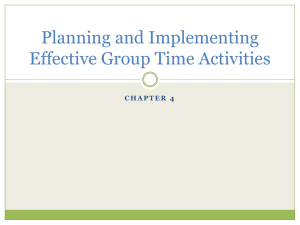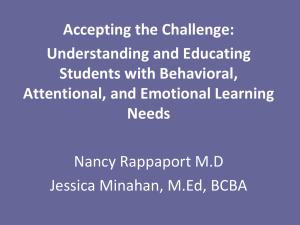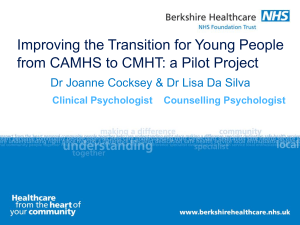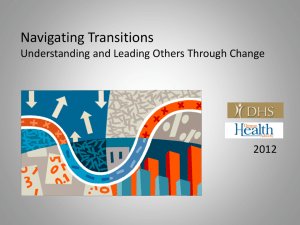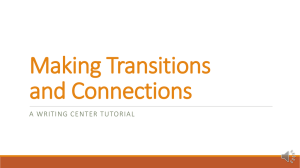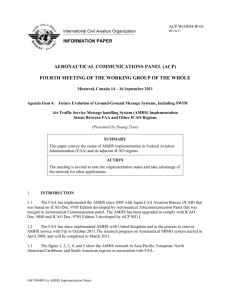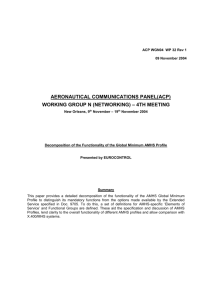Mental Health Needs of Young People and their transition to adult
advertisement
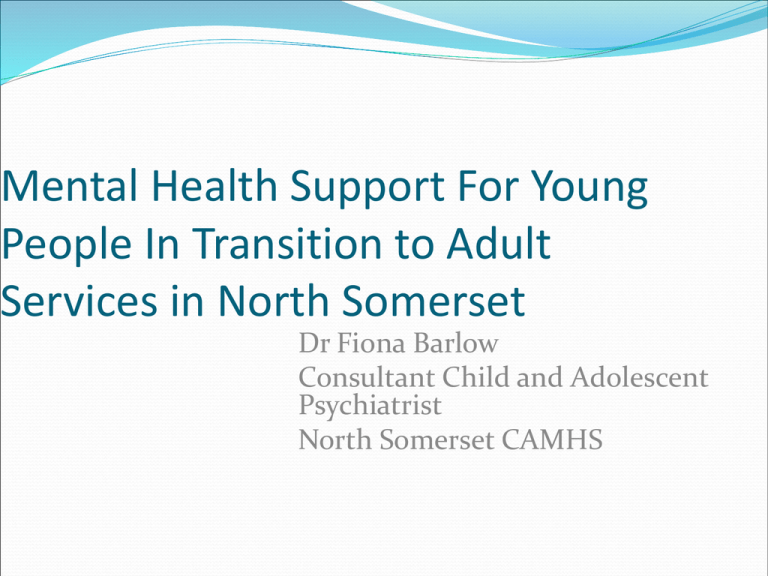
Mental Health Support For Young People In Transition to Adult Services in North Somerset Dr Fiona Barlow Consultant Child and Adolescent Psychiatrist North Somerset CAMHS Overview Brief overview of mental health issues in late adolescence Historical perspective of care provision for 16-18 yr olds Developments wrt service provision over past 7 years Current transition forums Current transition arrangements Adolescence Fascinating, critical complex stage of development with enormous changes Physically ( pubertal changes, menarche) Cognitively ( brain fine tuning,) Emotionally ( personal identity, autonomy, coping strategies) Socially ( peer groups, friendships, sexual identity) Adolescent Mental Health Half of all life time psychiatric disorders start by age 14 Three quarters start by age 24 ( Kessler et al 2005) 16-18 yr olds experience a relatively high incidence of mental health problems. Research indicates that 16-18 yr olds are at additional risk of developing mental health problems cf pre-16 or post-18. Less likely to seek professional help. Adolescent Mental Health Highest number of admissions to hospital for eating disorders is 15 yr old young people. Majority of people who self-harm are between 11 and 25.(Association for Young People`s Health) Completed suicide is rare. Rates for young men has fallen since 2011. Source: Key Data for Adolescents 2013 Public Health England Adolescent presentations within CAMHS/LD Anxiety disorders Depression/Self-Harm Obsessive –Compulsive Disorder Eating Disorders ADHD Autistic Spectrum Disorders/Asperger`s Syndrome Emerging Personality Disorders Psychosis PTSD Historical perspective 2004 NSF for Children set out 10 yr plan to develop services around the needs of children. Standard 9 The Mental Health and Psychological Well-being of Children and Young People 24 hour cover Comprehensive service for children with LD and Mental Health problems Access for all 16 and 17 year-olds, regardless of educational status Since 2007 N Somerset CAMHS commissioned up to 18th birthday Historical Perspective TRACK study 2009 ( S Singh) national project looking at transition period between CAMHS and AMHS over 6 different mental health trusts. Factors identified as important in making a transition inc: parental presence at appts, having serious mental illness, being on medication. Successful transfer inc period of parallel care and good information transfer between services. Highlighted that typical cases that fall through the gap inc neurodevelopmental disorders ( ADHD/ASD), emotional disorders and emerging personality disorders. Recommendations from TRACK Study Implement clear transitions protocols Audit protocols Talk to colleagues across AMHS-CAMHS divide Good Information transfer across services Arrange joint meetings/assessments Period of parallel care between services i.e. seamless Transitions workers across teams Extend adult services for adolescents who fall through the gap Local Developments North Somerset AMHS-CAMHS working group was set up in 2007. Members included reps from AMHS, CAMHS, NS PCT, EIPS, Adult Social Care, Crisis team, mental health liaison team, Area Services manager ,Consultant Psychiatrist from Riverside Adolescent Unit, transitions social worker for LD, BCH CAMHS What has this Working Group achieved? Establishment of ‘link’ relationships between adult and child teams Regular advice/liaison with commissioners Established clear protocols for transition to adult services which are now integral to multiagency transitions protocol. Clear pathway agreed between AWP and WAHT for assessment of 16-18 year olds with emergency presentations at WGH AMHS-CAMHS Working Group Opportunity to discuss management of emergency presentations Reflective learning from examples of poor transitions Interface with many different agencies working with young people with mental health difficulties Contribution towards establishment of new ADHD service for adults in 2010 with agreed transition protocol Current Forums for Transition AMHS-CAMHS Working Group meeting 6 monthly Reps from CAMHS, EIPS, Access Services manager, manager of Mental Health Liaison Team, Primary Care Liaison Team and Intensive Support team and WGH ED Focus on strategic/service development Transitions Operations Group chaired by CTPLD manager meeting 2 monthly Multiagency forum with reps form adult LDSWT, AMHS, CAMHS-LD, Housing, Weston College, Learning Partnership West, OT, Social Care, CCG Aim is to identify and plan for those young people with complex needs who will need additional support in adulthood Current Transition Arrangements Any young person aged 17 and 6 months identified by team as requiring ongoing support for mental health needs Refer to Primary Care Liaison Service who act as gateway into AMHS Ideally if referral is accepted, we arrange a joint assessment between CAMHS-AMHS. Aim to complete joint assessment and arrange handover meeting prior to young person`s 18th birthday Transition Arrangements Contd If following assessment, young person does not meet criteria for AMHS, they will be signposted to other possible avenues of support. For those young people with ADHD, clear transitions referral pathway from 17 years to adult ADHD service based in Bristol. Ideally handover meeting is held locally to maximise engagement of young person. Transition Arrangements for Children/adolescents with LD Transition reviews start at 14 for children with SEN Ideally families given Transitions Information Pack All young people with additional needs referred to transitions social workers for FACS assessment This determines eligibility for access to relevant adult services e.g. adult LD/social care Parents can initiate this referral via LD4U website Once referral received, information gathered from all agencies involved. Transition Arrangements for Children/adolescents with LD If LD eligible, young person is allocated a transitions worker who links between both services and initiates transitions assessment. This is a holistic assessment of the young person`s strengths and needs and identifies support post 18. Where appropriate, there is a period of parallel care between child and adult services partic for those with complex health needs and/or challenging behaviour. Any Questions??



